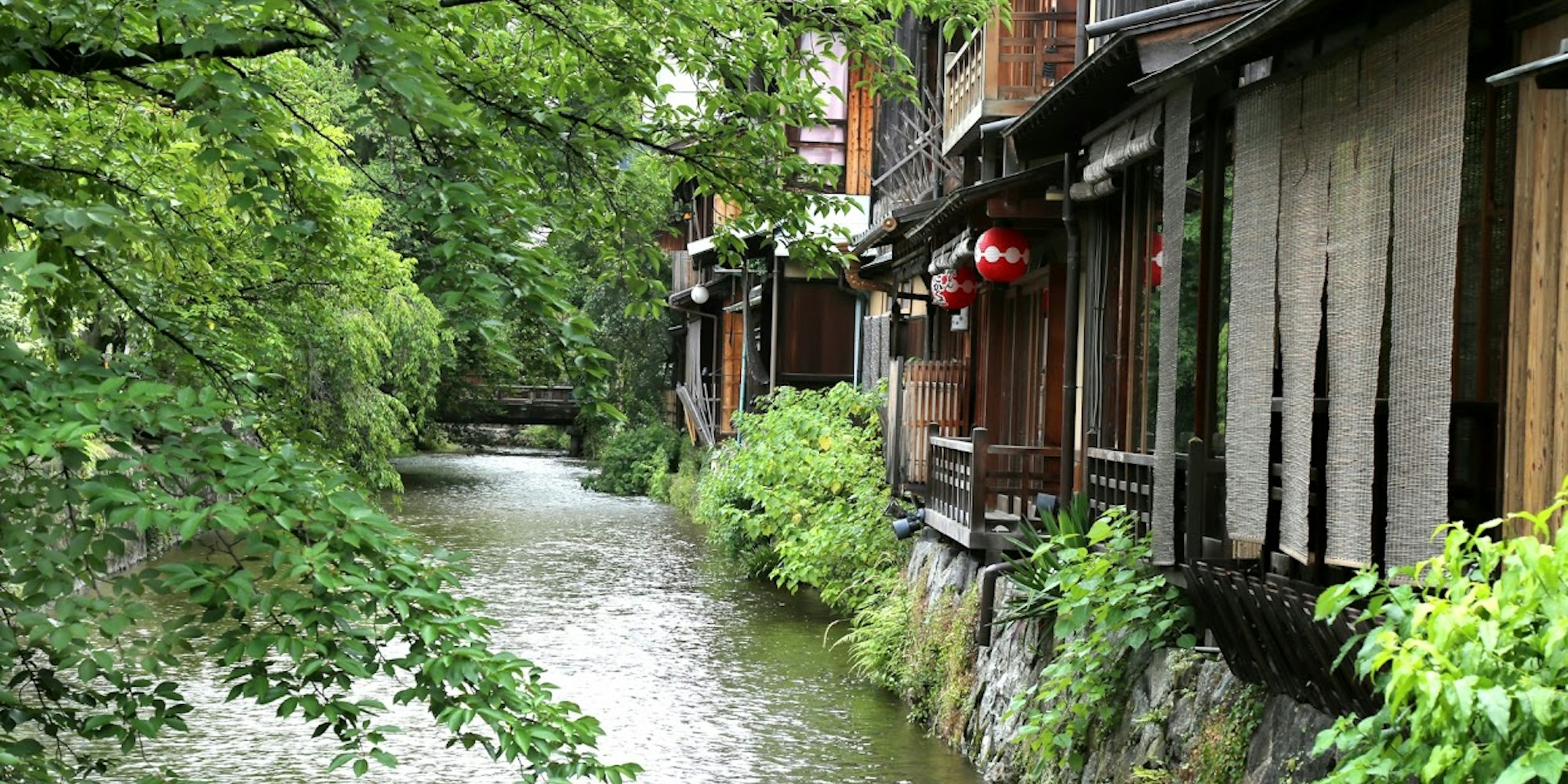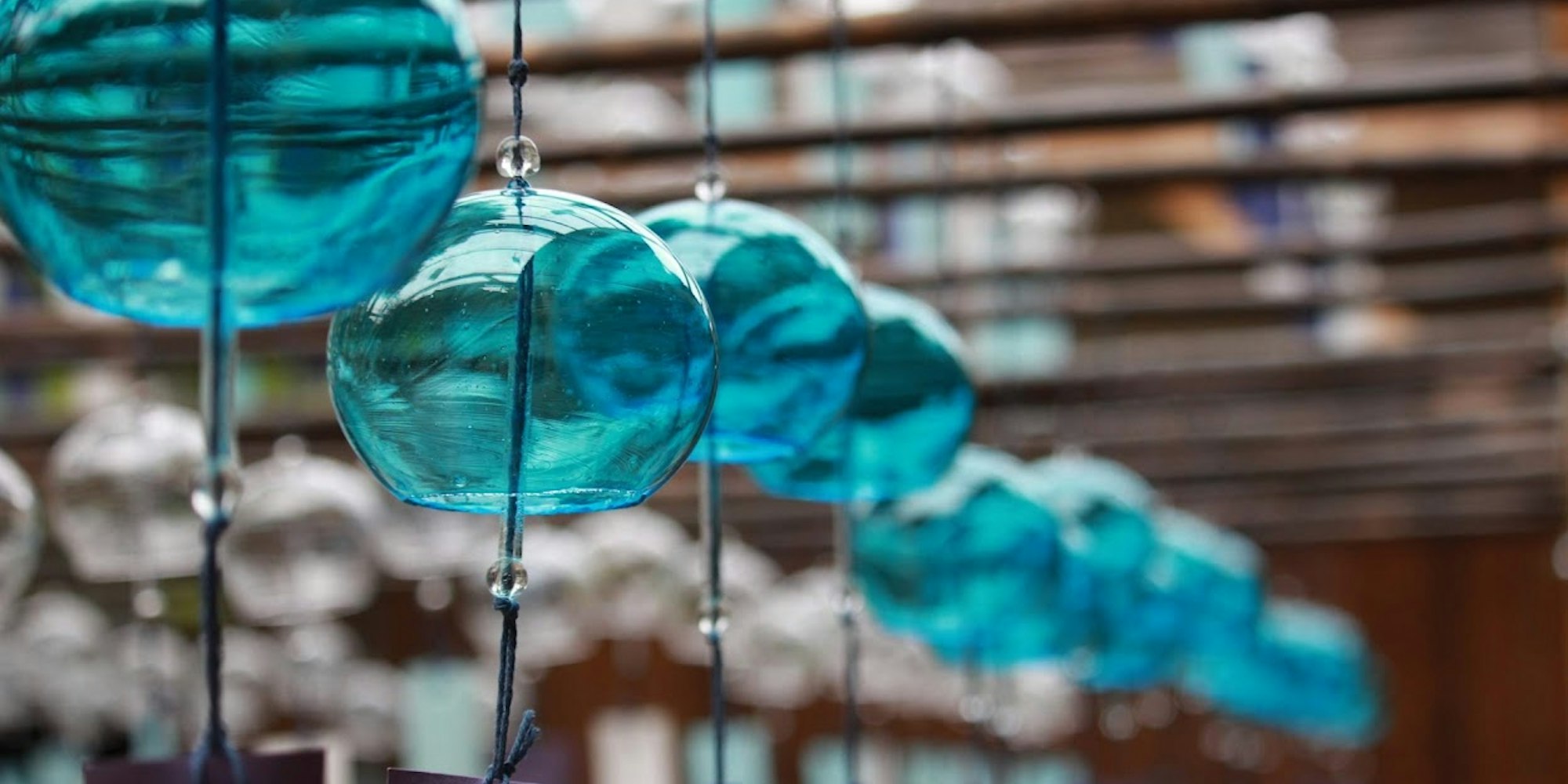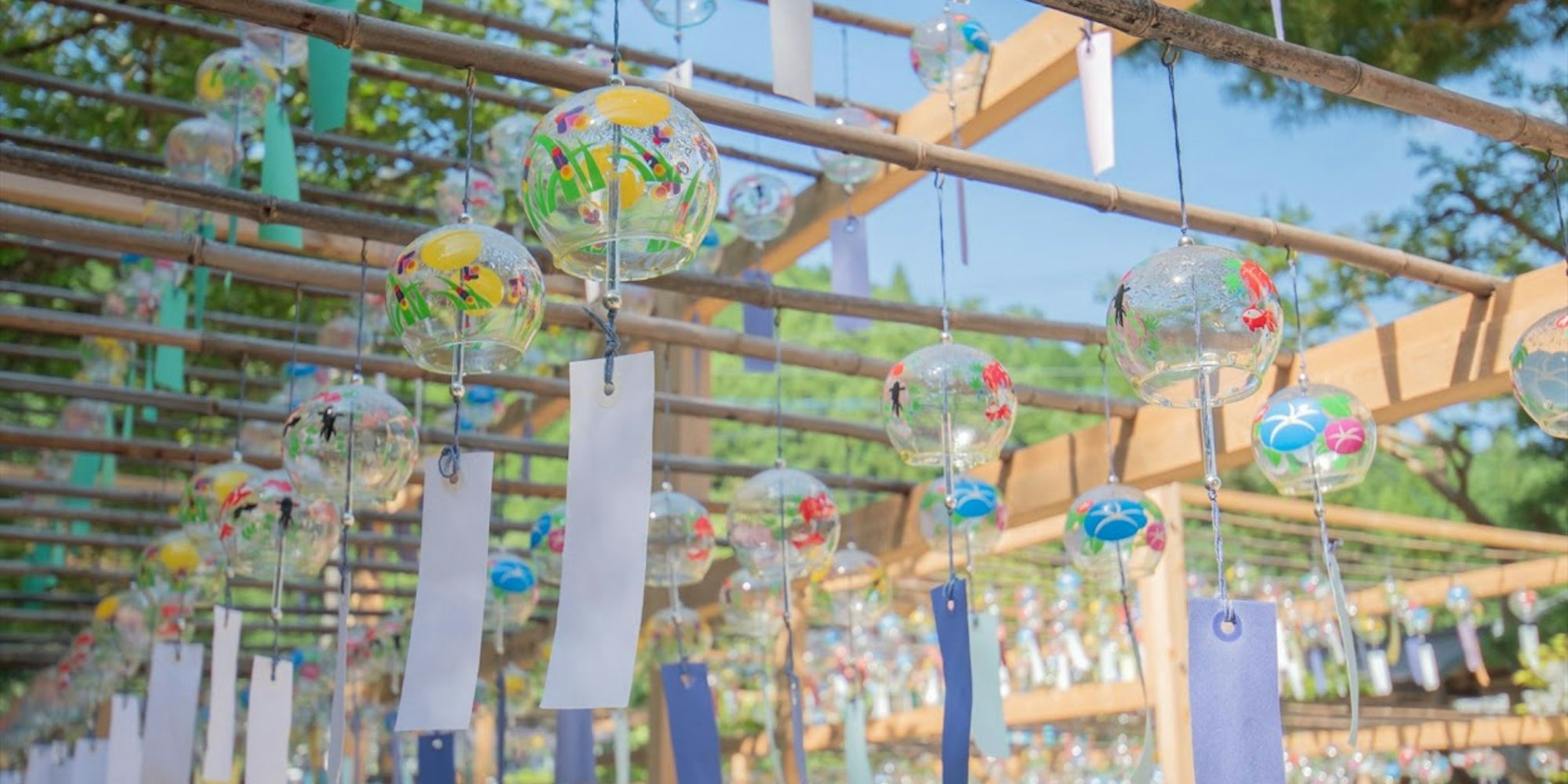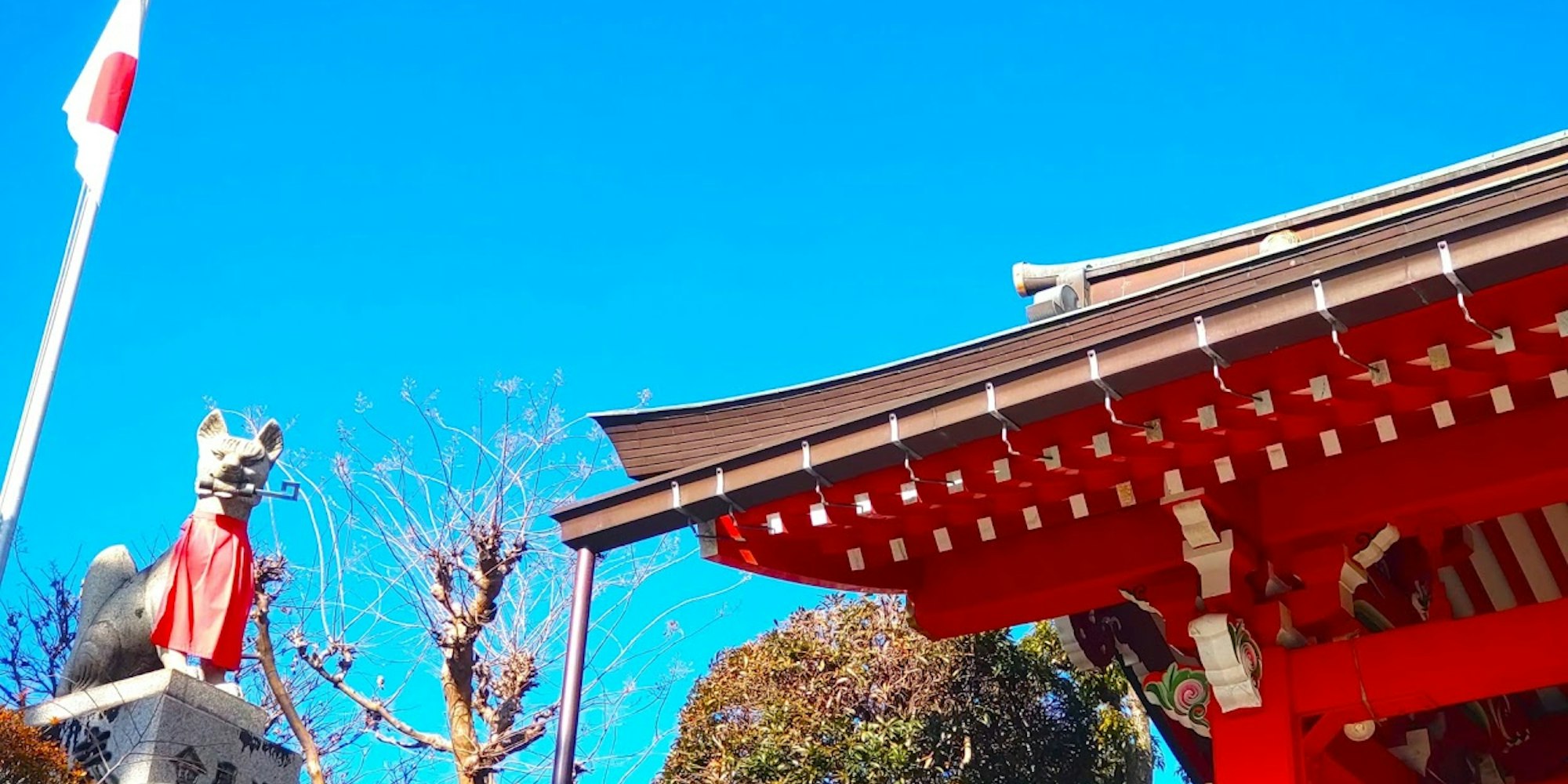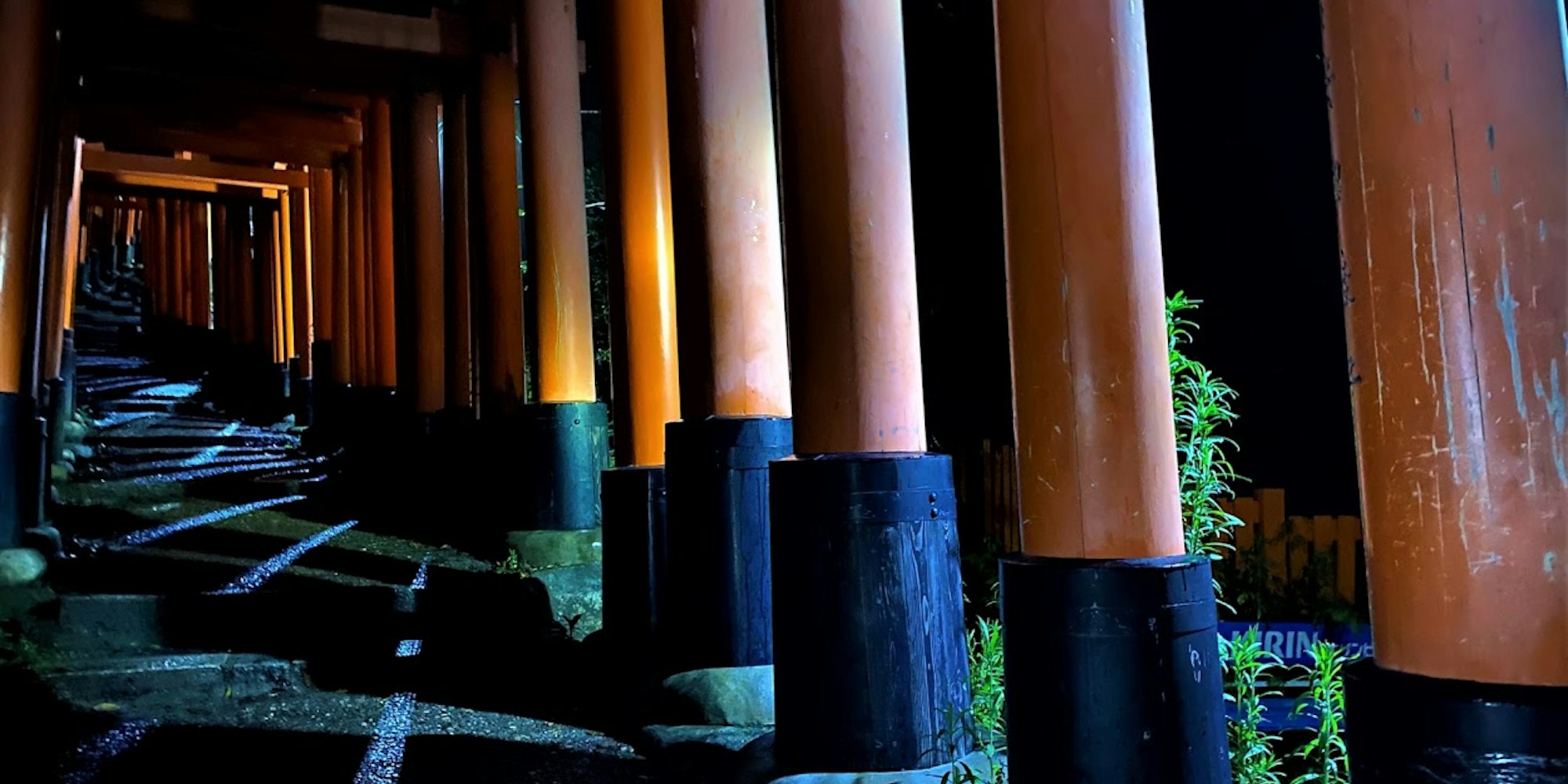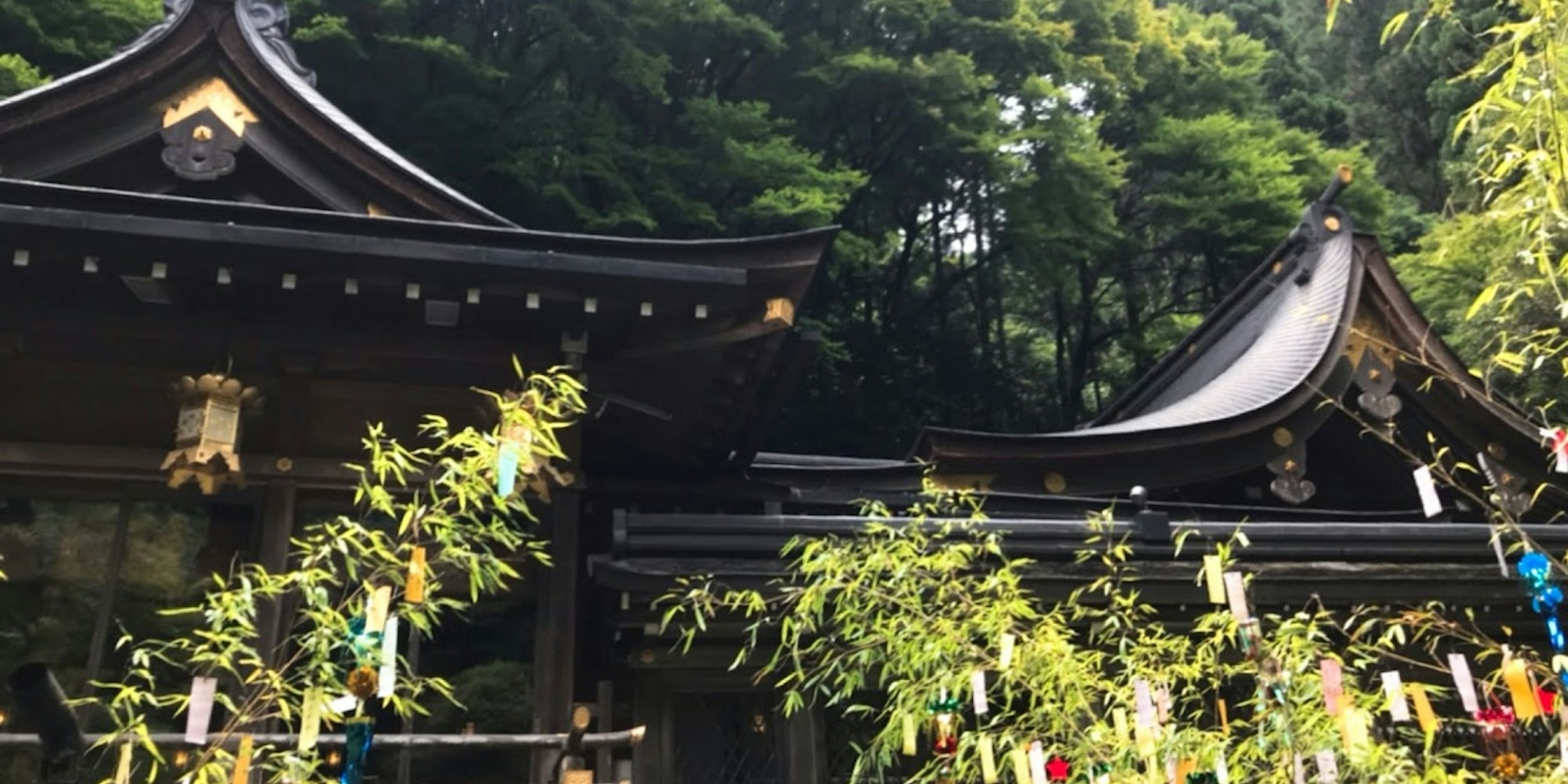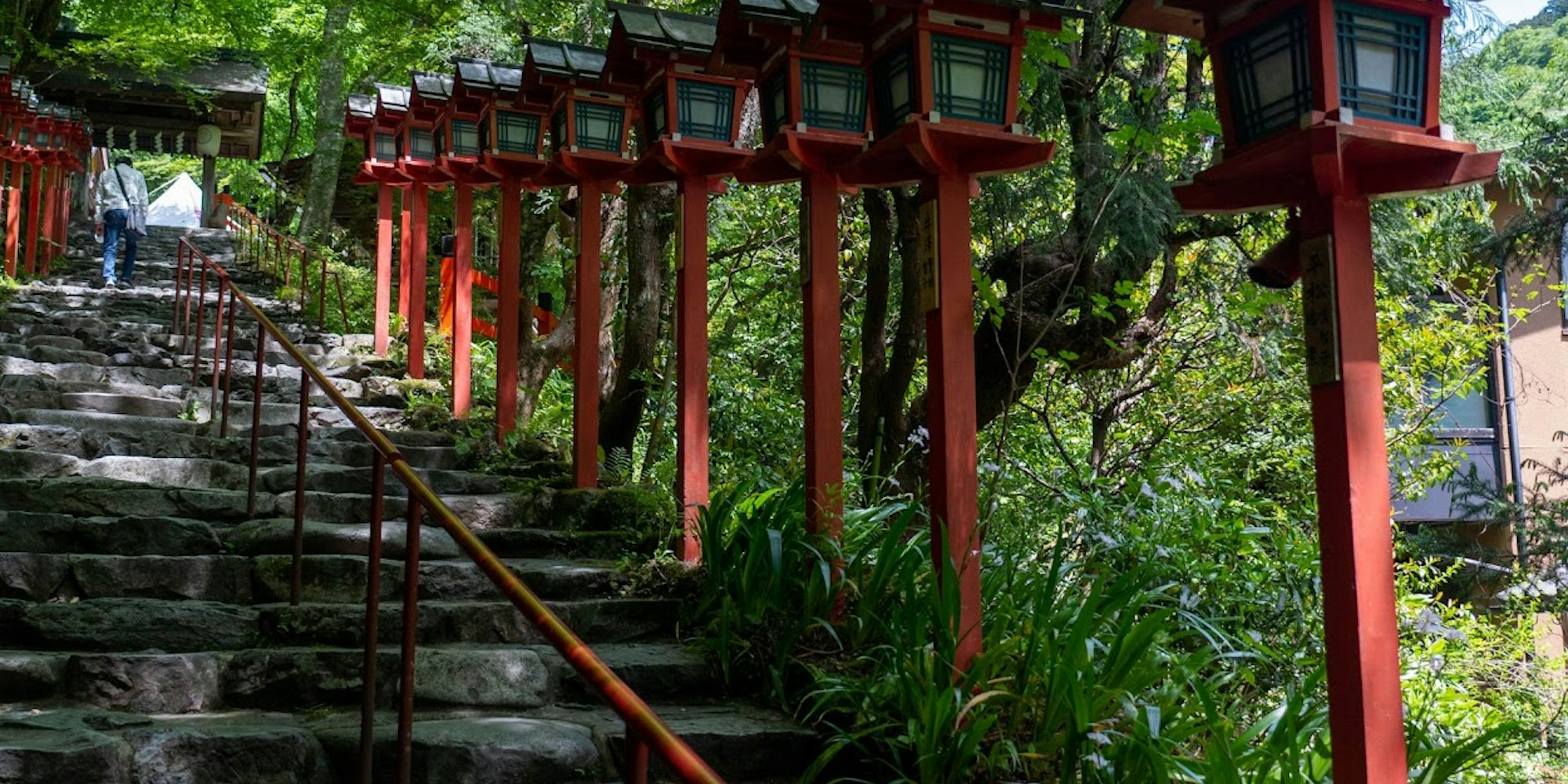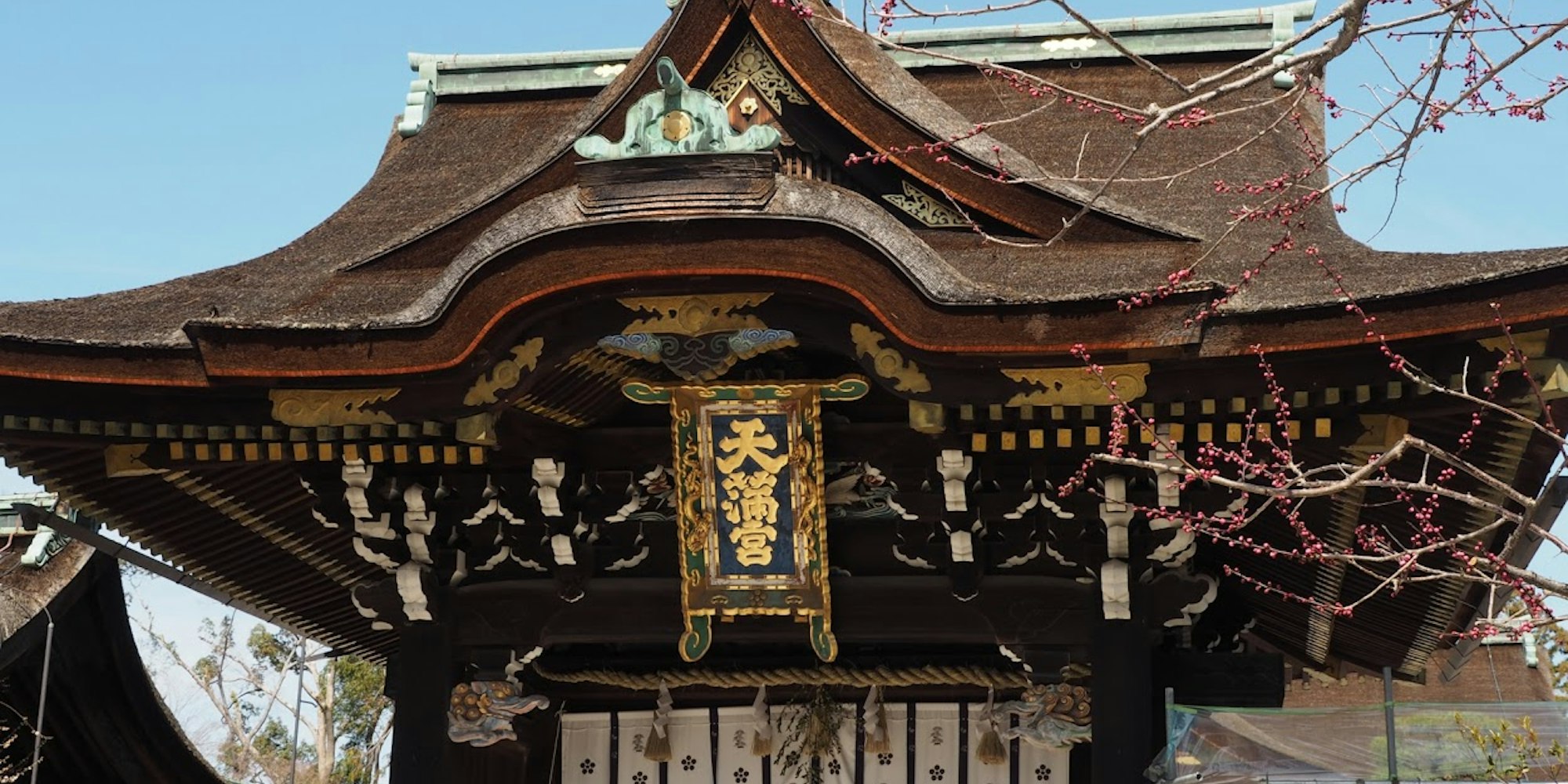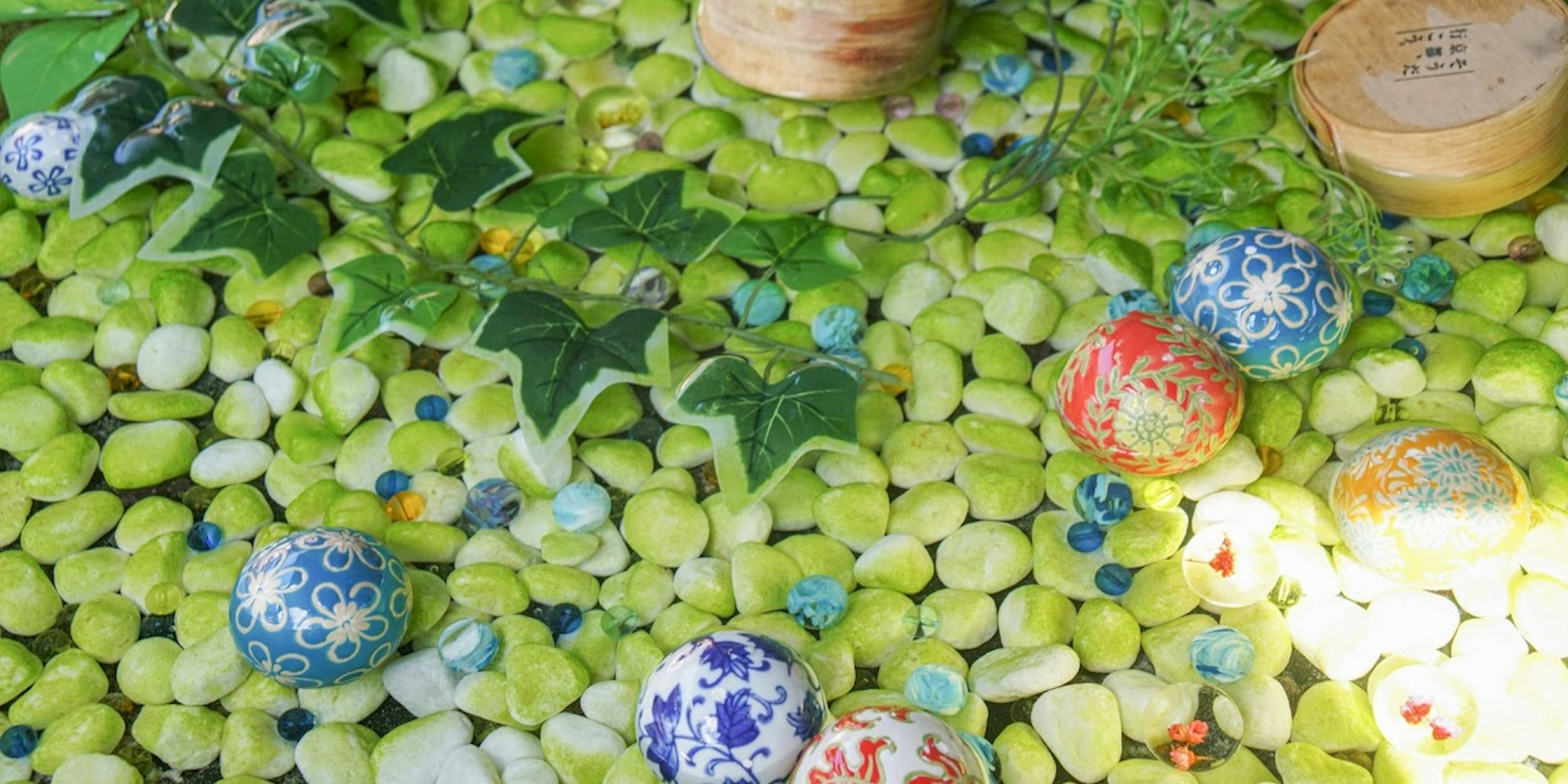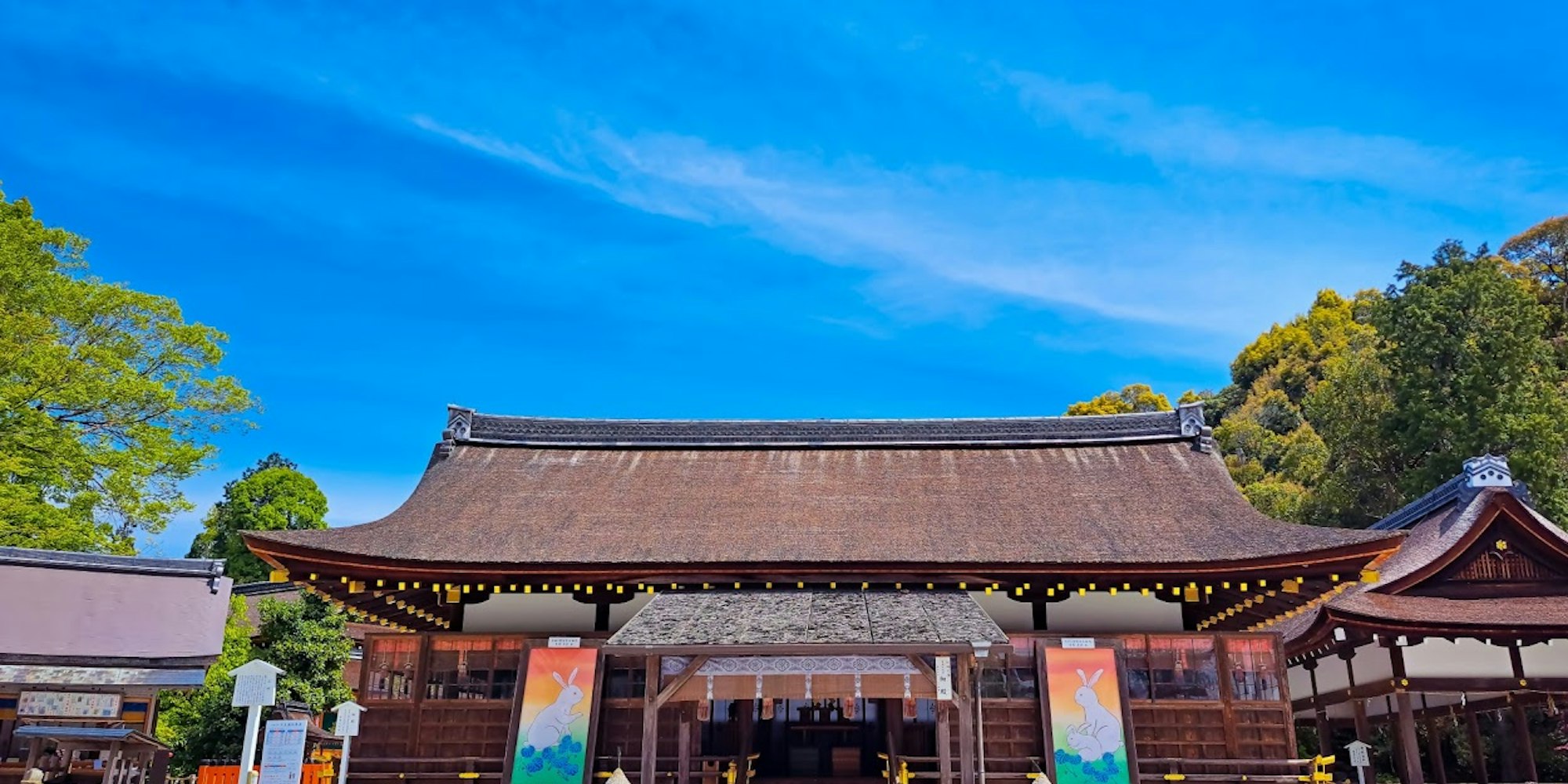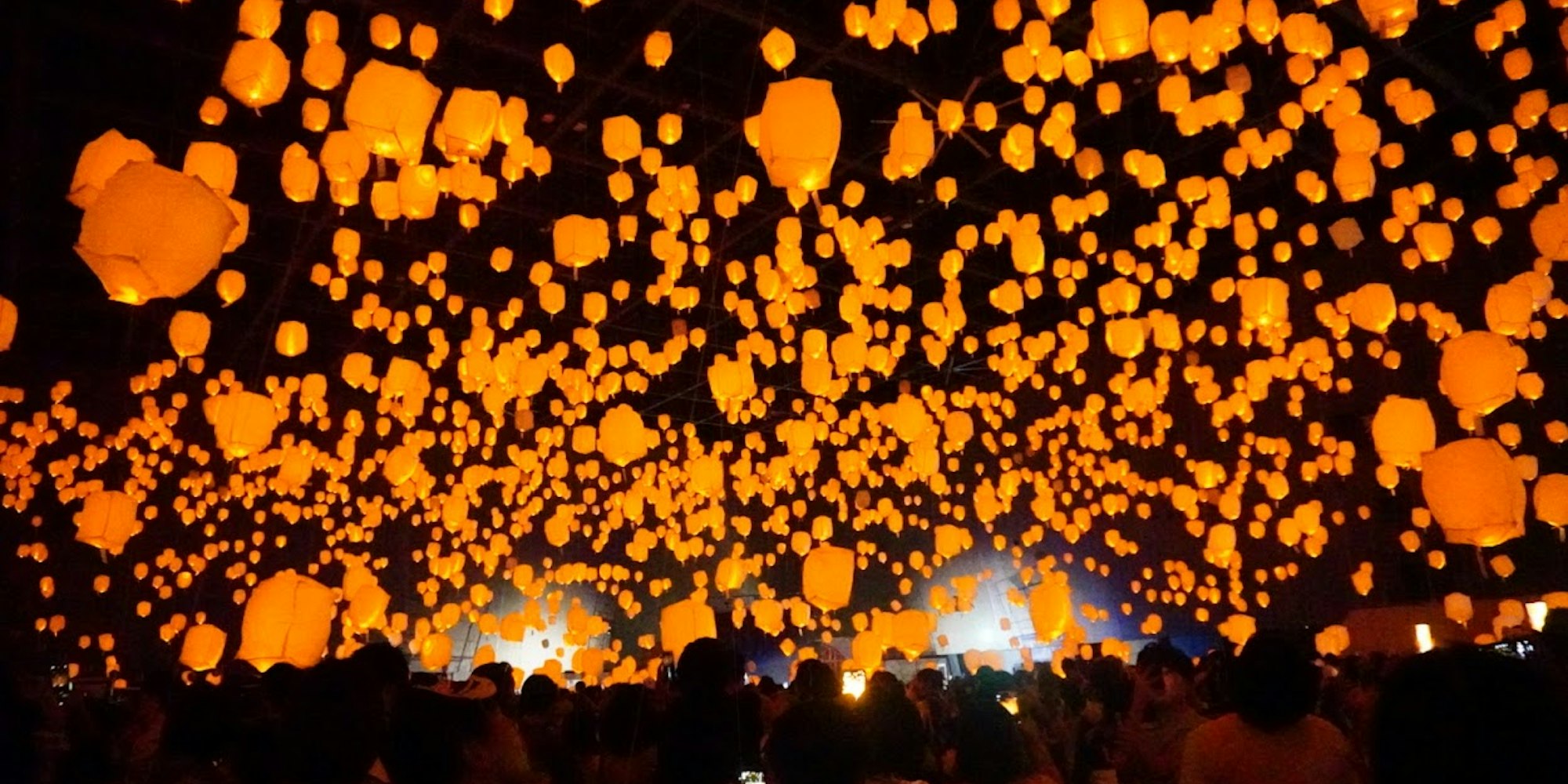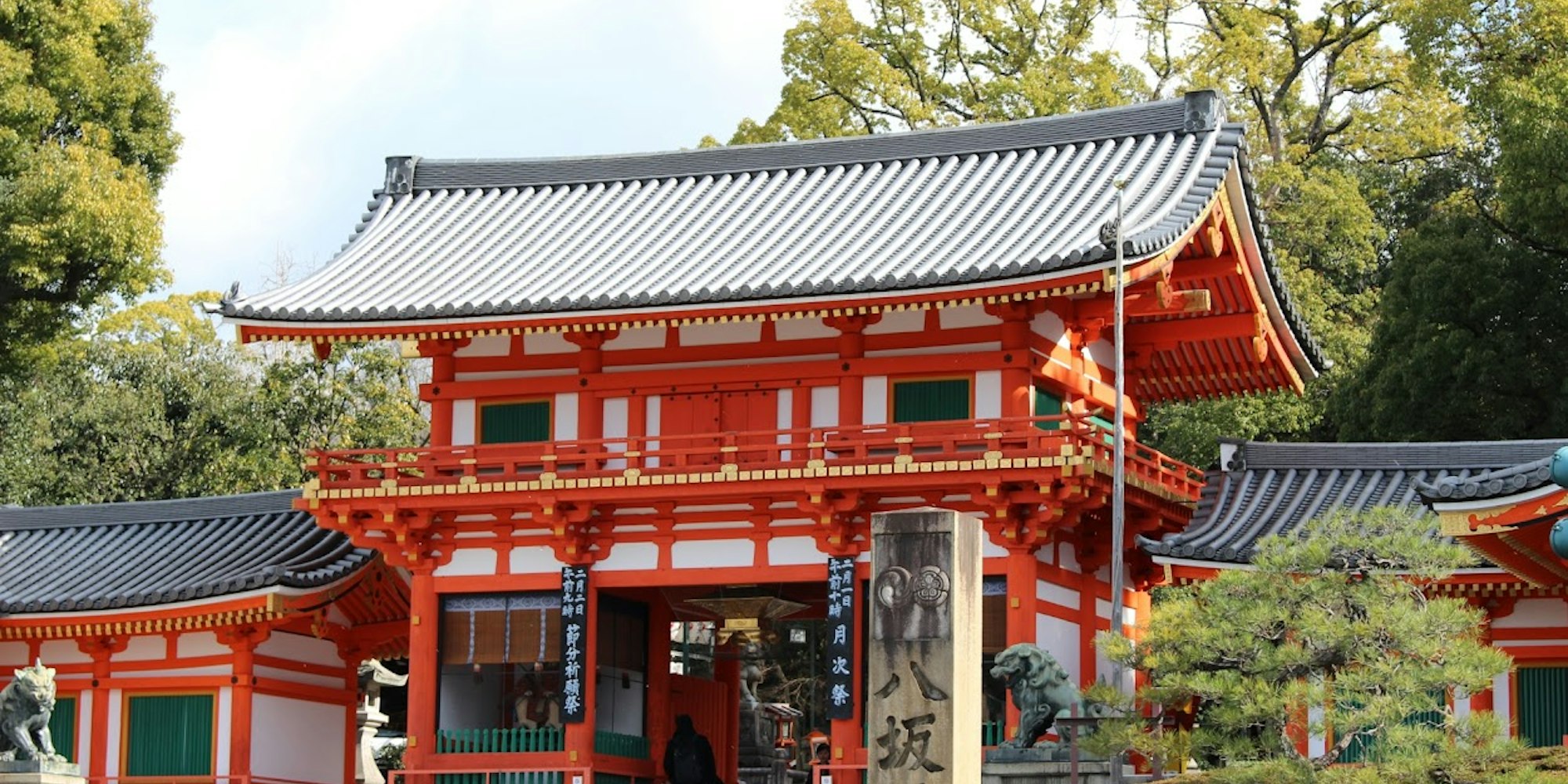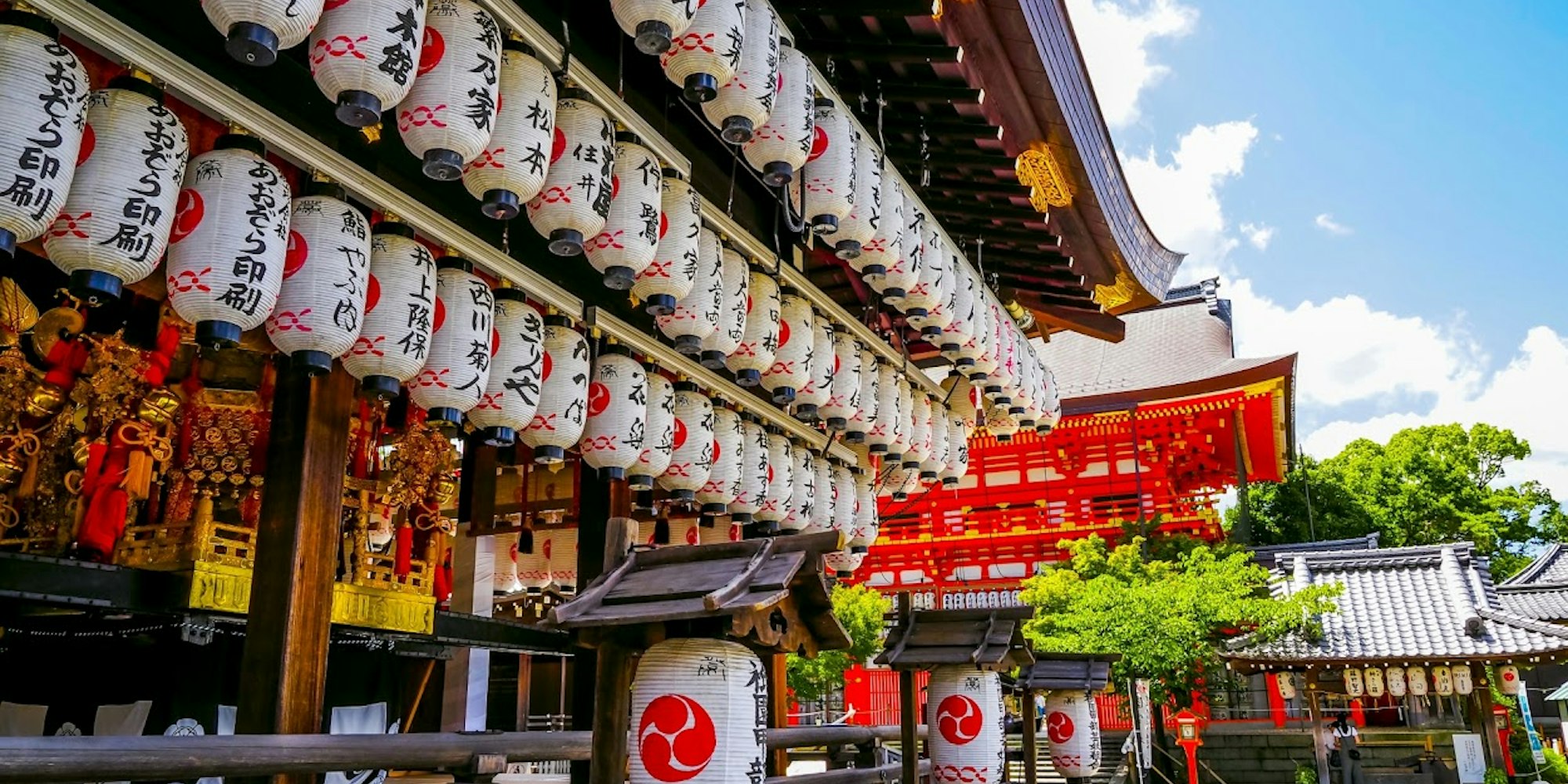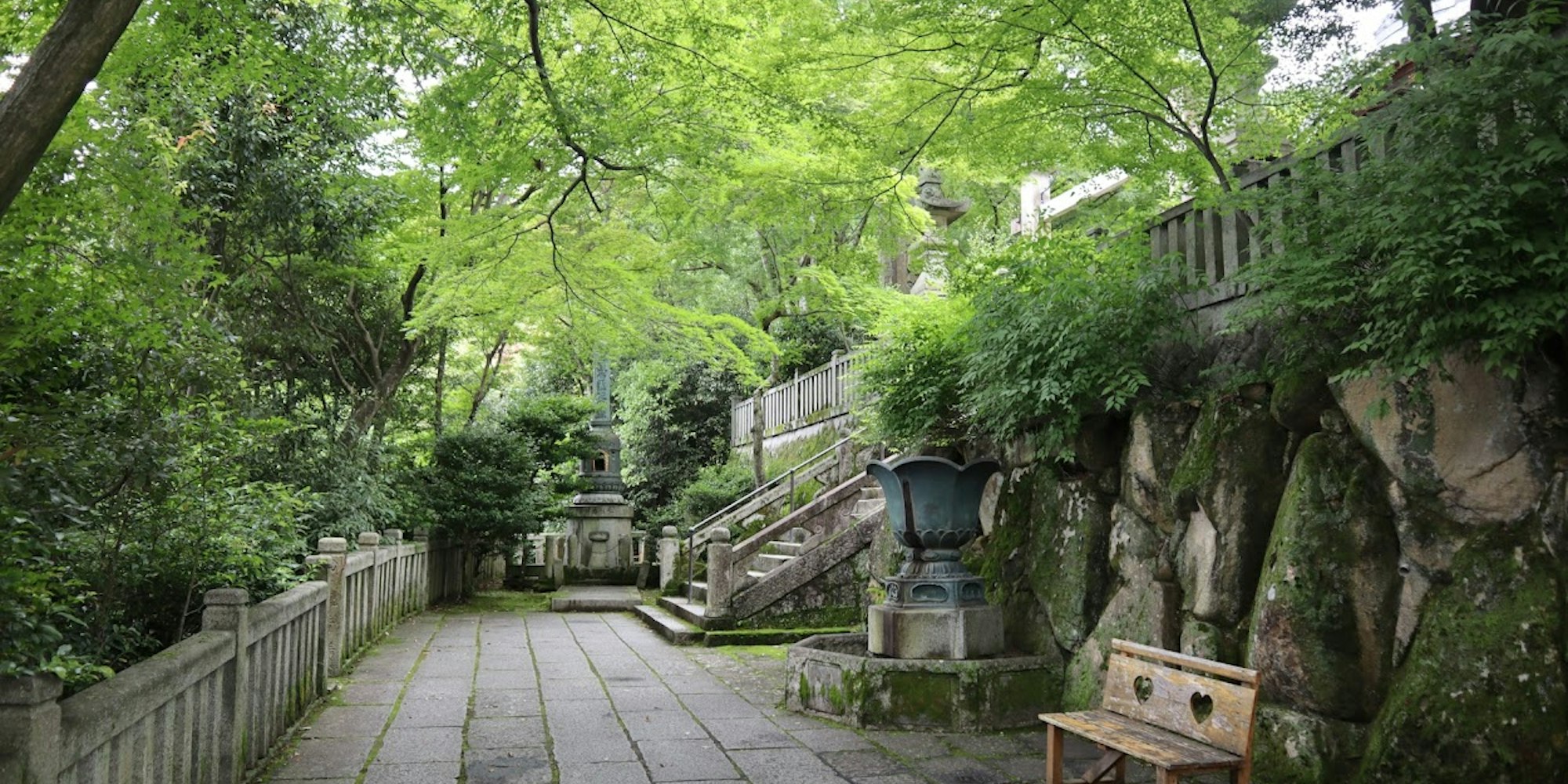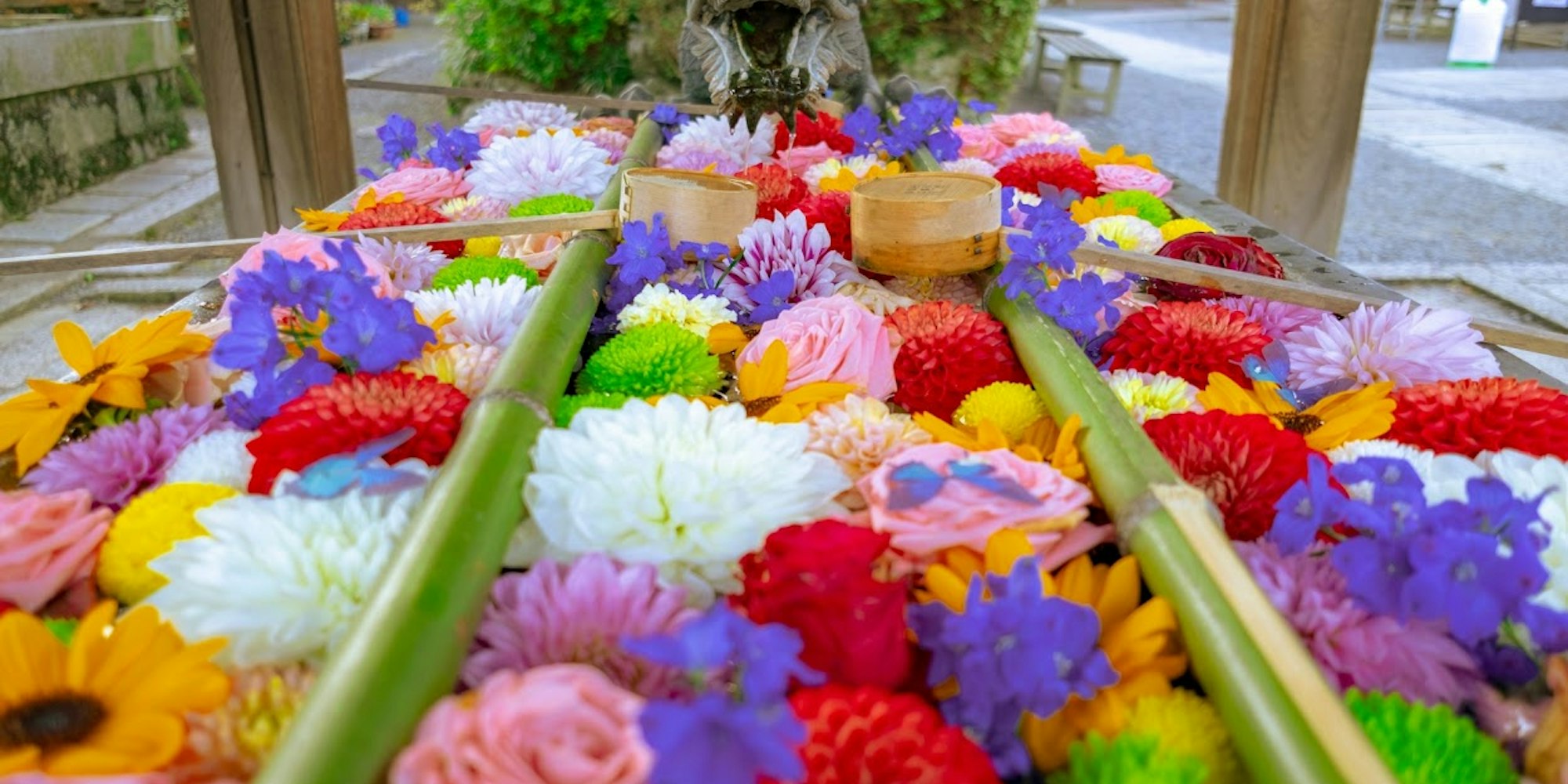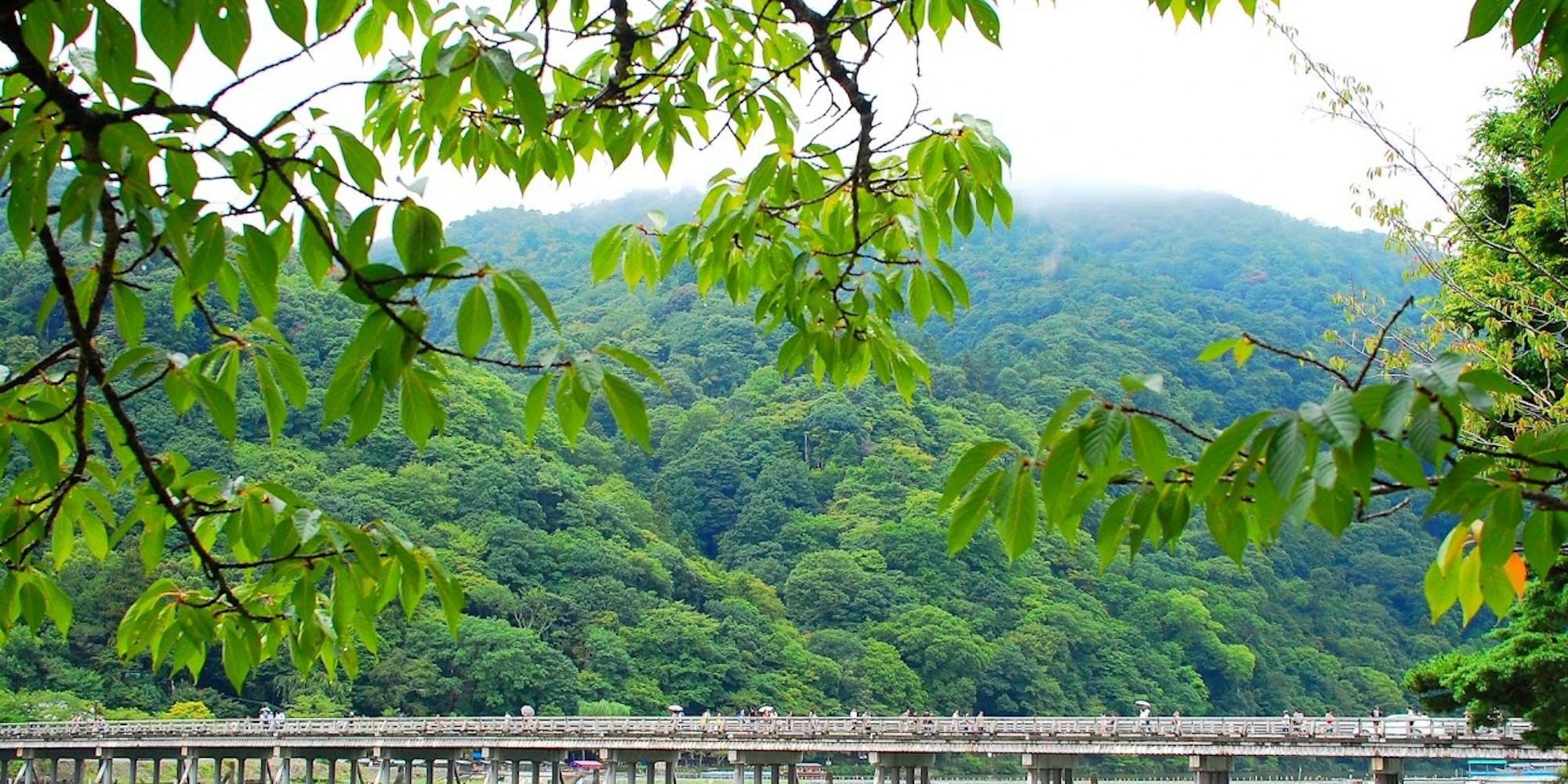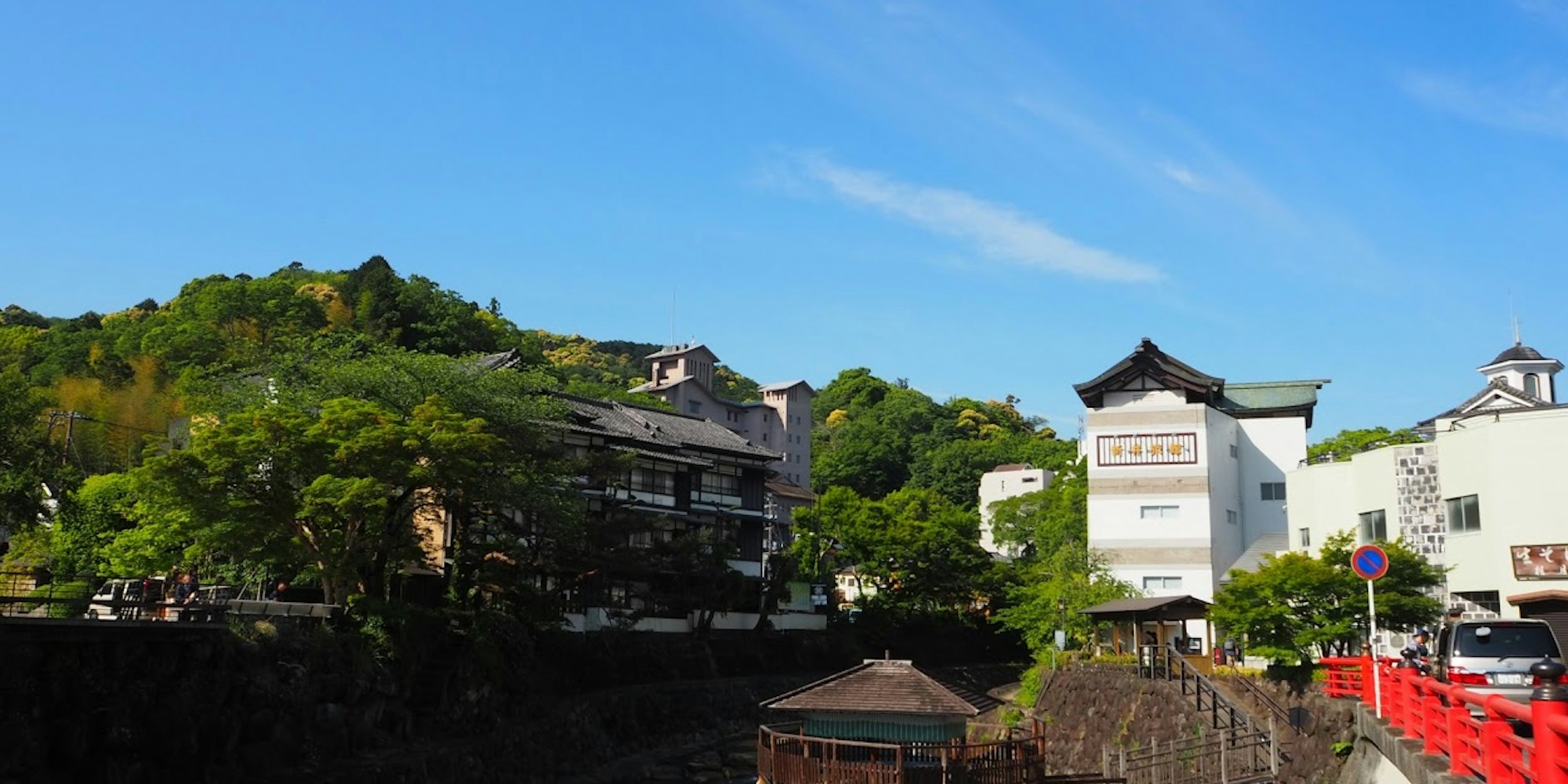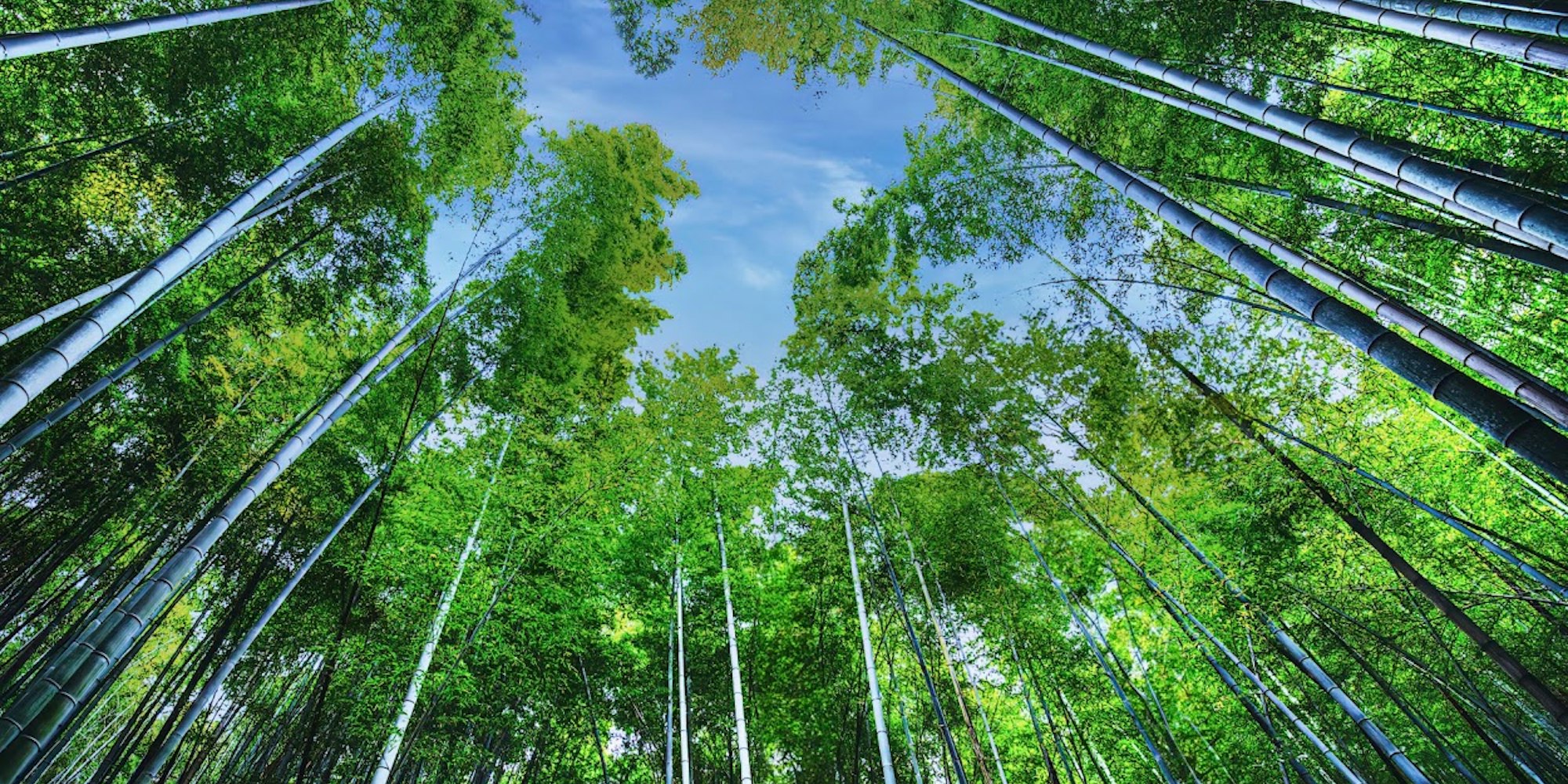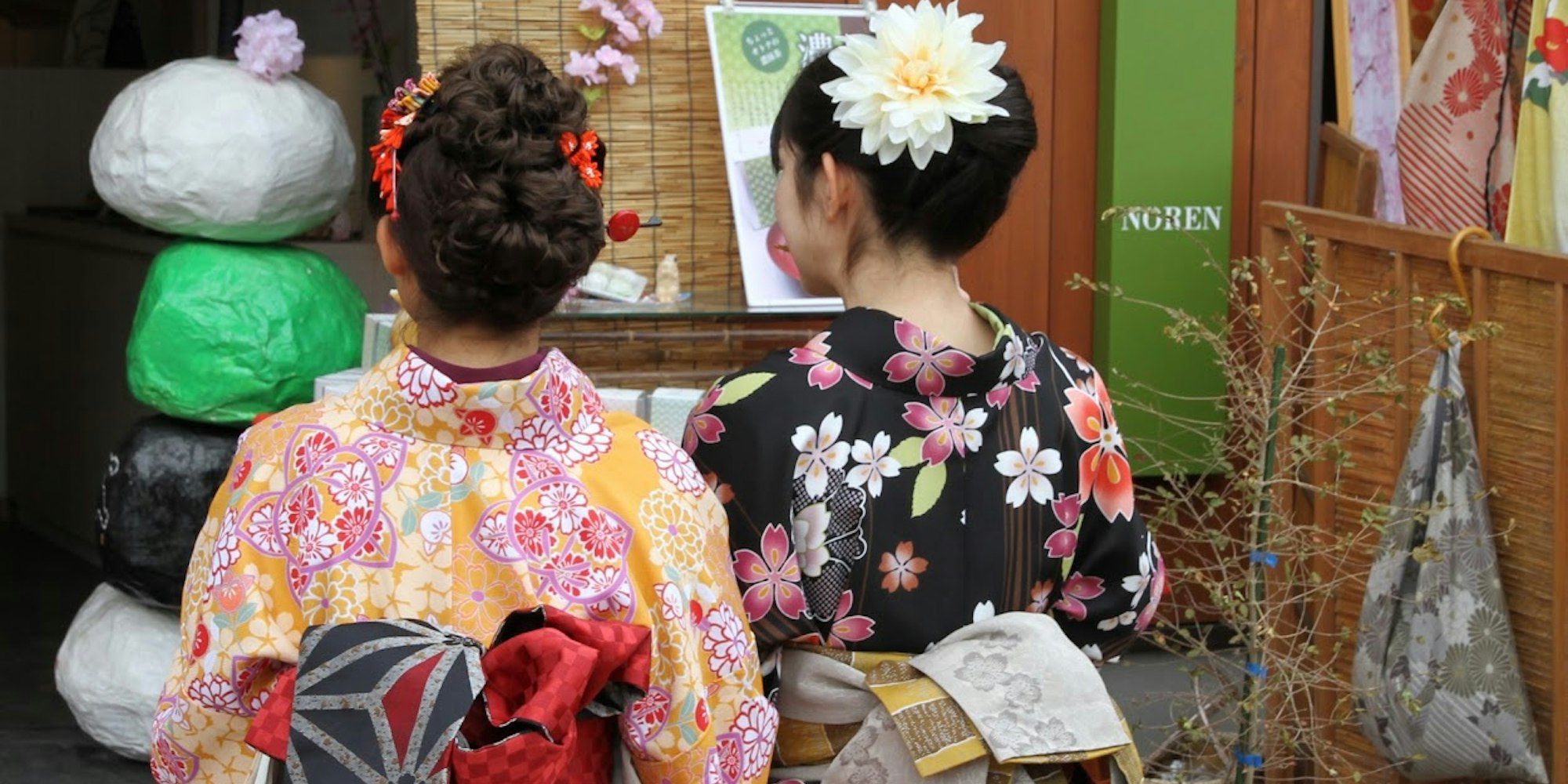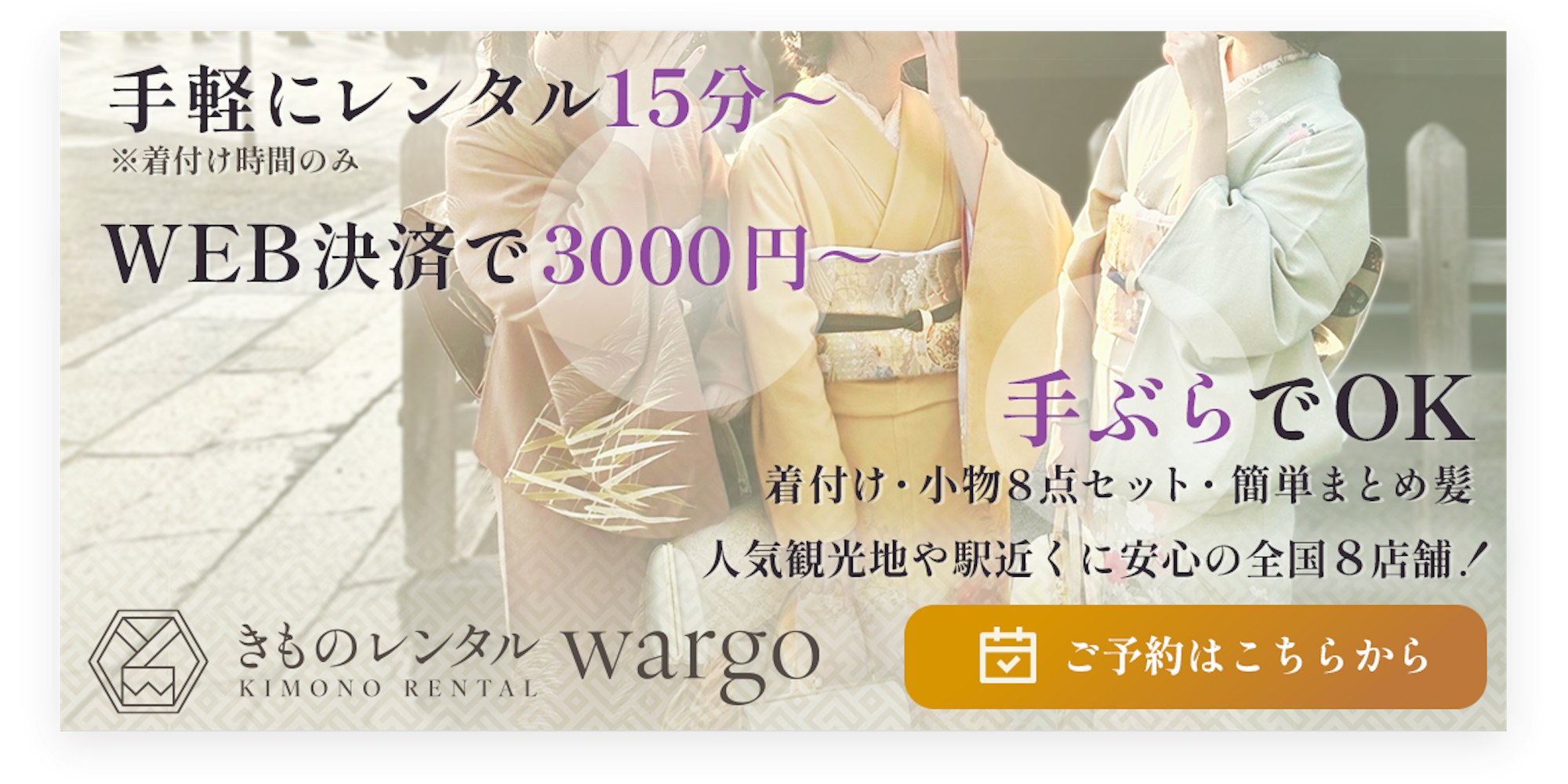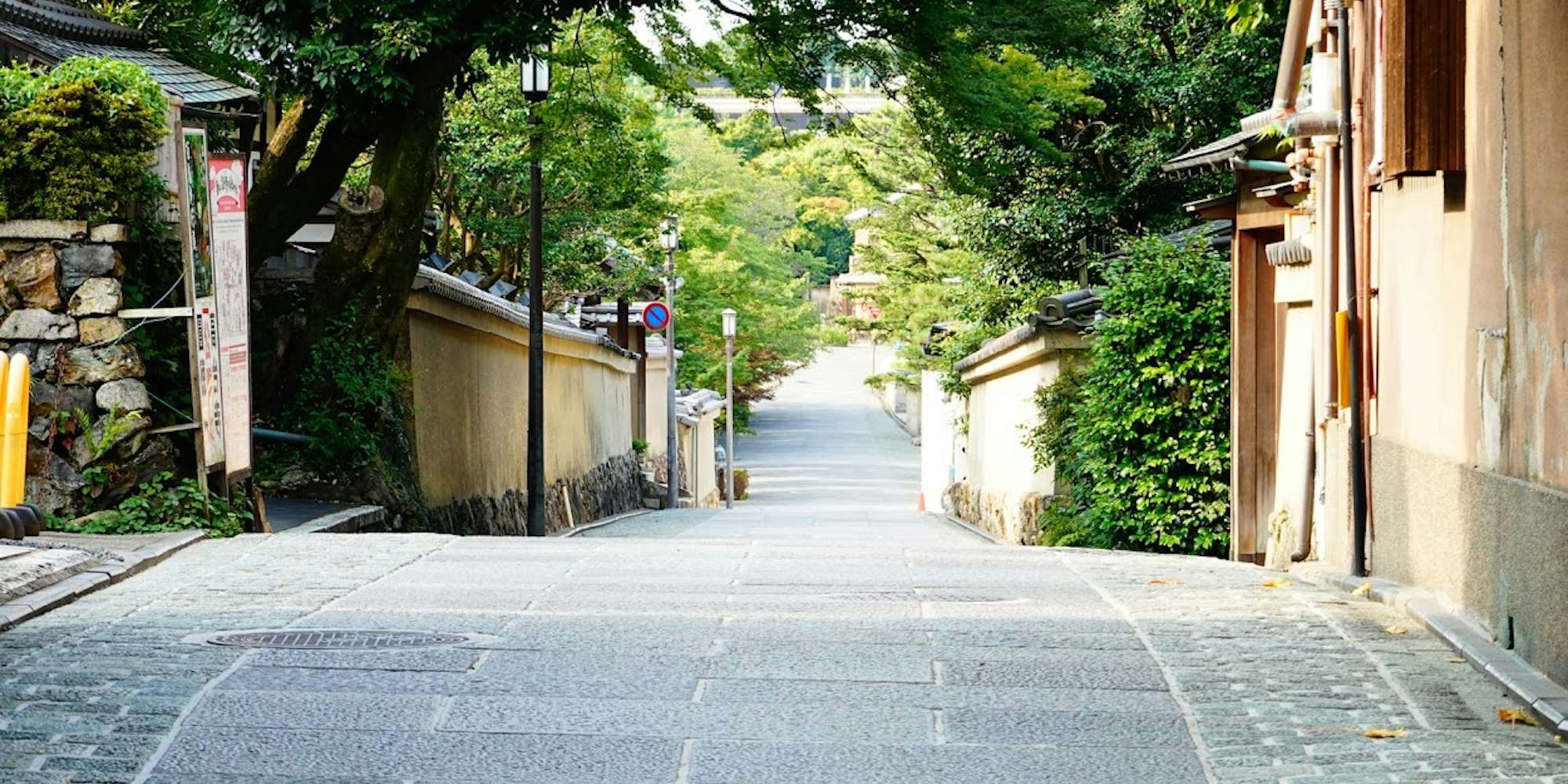Kyoto is a popular tourist destination year-round. With spots and townscapes that let you experience Japanese culture and history, it attracts many visitors from both within Japan and abroad.
August is a particularly recommended season for sightseeing in Kyoto. Here, we'll introduce recommended tourist spots and festivals/events in Kyoto, surrounded by fresh greenery and summer air.
Please read on to the end.
11 Popular Tourist Spots to Visit in Kyoto in August
Here are 11 recommended popular tourist spots to visit if you're going to Kyoto in August.
Enjoy Kyoto in August to the fullest with atmospheres and events that can only be experienced in summer.
Shojuin Temple
Shojuin Temple is one of the popular temples in Kyoto, especially among young people. It's famous for its heart-shaped window called "Inome Window," which is popular as a photogenic spot because the outside scenery changes with the seasons. The cute ceiling paintings are also a reason why it became famous as a photo spot.
Shojuin Temple is also known for its numerous wind chimes displayed during summer, surrounding visitors with cool sounds and scenery. Why not spend some time forgetting the heat in the scenery where the summer sky matches with wind chimes?
■ Reviews and Reputation
It was a healing trip with cute wind chimes. Apparently, the contents of the wind chimes change with the seasons, so I think it can be enjoyed in any season! This time I went in August, so I enjoyed a summer-like, atmospheric feel. It would look great in photos wearing a kimono too!
Address: 149 Okuyamada Kawakami, Ujitawara-cho, Tsuzuki-gun, Kyoto Prefecture
Access: Direct taxi available from Kyoto Station (MK Taxi / reservation required)
Visiting hours: 9:00-16:30 (9:00-16:00 from November to March)
Admission fee: 600 yen
Official website: Shojuin Temple
Fushimi Inari Shrine
Fushimi Inari Shrine is a well-known landmark in Kyoto. It's famous for its impressive rows of thousands of torii gates and is known as a popular tourist spot attracting many people from both Japan and overseas.
The shrine grounds are filled with vermilion buildings and many Inari statues, creating a breathtaking landscape at every turn.
Walking through the entire Fushimi Inari Shrine requires quite a bit of stamina. If you're visiting in August, it's recommended to avoid the daytime and visit during relatively cooler hours such as early morning or night.
Fushimi Inari Shrine in the dark has scattered lights, offering a unique atmosphere.
■ Reviews and Reputation
I finally visited Fushimi Inari Shrine, which I had wanted to go to for a long time. There were so many foreign tourists!! Despite the intense heat, I managed to walk all the way to the top of the mountain. I recommend comfortable walking shoes and cool clothing... (laughs).
Address: 68 Fukakusa Yabunouchicho, Fushimi-ku, Kyoto City, Kyoto Prefecture
Access: Right next to JR Inari Station
Visiting hours: 24 hours
Admission fee: Free
Official website: Fushimi Inari Shrine
Kifune Shrine
Kifune Shrine is a historic shrine located at the foot of Mount Kurama, where events like the Tanabata Festival are held in summer.
It's also famous as a power spot, believed to increase clairvoyant abilities and bring good luck in relationships. Known as the birthplace of the Ushi no Koku Mairi ritual and ema votive tablets, it's a shrine with a long history that exudes dignity.
It's not a noisy place, but rather a quiet one where the god of water is enshrined, so please visit with a calm mind.
The stone steps leading to Kifune Shrine's precincts are a famous photo spot, lined with rows of red lanterns. While the contrast with the fresh greenery during the day is beautiful, it's also recommended to visit after dusk when the lights are lit.
■ Reviews and Reputation
I took a bit of a trip out from the city center to visit Kifune Shrine, located deep in the mountains. There were also restaurants offering kawadoko (riverbed dining) around the shrine. I climbed the famous stone steps to the main shrine. It had a quiet and calming atmosphere.
Address: 180 Kurama Kibune-cho, Sakyo-ku, Kyoto City, Kyoto Prefecture
Access: 4-minute walk from Kibune bus stop
Visiting hours: 6:00-18:00
Admission fee: Free
Official website: Kifune Shrine
Kitano Tenmangu Shrine
Kitano Tenmangu Shrine is a famous spot in Kyoto often mentioned as a place known for plum blossoms. It's considered the head shrine of about 12,000 Tenmangu and Tenjin shrines across Japan.
There are many national treasures, important cultural properties, and famous spots scattered throughout the shrine grounds, so it's good to allocate plenty of time if you plan to visit.
Take your time to explore various famous spots, including the National Treasure "Main Hall" and the Important Cultural Property "Sanko Gate."
Around August, Kitano Tenmangu Shrine features flower balls floating in the chozuya (hand-washing basin), creating a charming atmosphere. Purify yourself with the visually cooling flower ball chozuya and properly pay your respects at the shrine.
■ Reviews and Reputation
I was able to see the hozuki (Chinese lantern plant) flower hand-washing basin. The flowers in the hand-washing basin are frequently changed, so I can't help but look every time I come. This time, hozuki were displayed as it was close to Obon. I took my time looking around this time too and was very satisfied.
Address: Kitano Tenmangu, Bakurocho, Kamigyo-ku, Kyoto City
Access: Immediately from Kitano Tenmangu-mae bus stop
Visiting hours: 5:30 - 17:30
Admission fee: Free
Official website: Kitano Tenmangu
Kamigamo Shrine
Kamigamo Shrine, officially named "Kamo Wakeikazuchi Shrine," is a famous shrine in Kyoto. Built during the reign of Emperor Tenmu, it is now registered as a World Heritage site.
As the oldest shrine in Kyoto, researching its history beforehand will allow you to appreciate the buildings even more during your visit.
Kamigamo Shrine is recommended as a photo spot, with its vivid vermilion torii gate and buildings contrasting beautifully against the summer blue sky. If you attend the "Tanabata Sky Lantern Festival," you can also see numerous lanterns flying up to cover the night sky.
■ Reviews and Reputation
I participated in the Tanabata Sky Lantern Festival at Kamigamo Shrine. The sight of lanterns being released simultaneously with the countdown and gracefully ascending was fantastical and very beautiful. It was enjoyable with festival-like events such as food and games.
Address: 339 Kamigamo Motoyama, Kita-ku, Kyoto
Access: Immediately from Kamigamo Jinja-mae bus stop
Visiting hours: 24 hours
Closed: None
Admission fee: Free
Phone number: 075-781-0011
Official website: Kamigamo Shrine
Yasaka Shrine
Yasaka Shrine is one of the largest shrines in Kyoto. Affectionately known as "Gion-san," it attracts many visitors from both locals and tourists.
While it's known as the venue for the Gion Festival, one of Japan's three major festivals held in summer, there's a somewhat calmer atmosphere in August after the festival ends.
Yasaka Shrine, with its eye-catching architecture of vibrant vermilion and green, is perfect for summer visits. Many people take commemorative photos at Yasaka Shrine, which looks great against the summer blue sky and white clouds.
Be sure to take a memorable photo after your visit.
■ Reviews and Reputation
I visited Yasaka Shrine in Kyoto. It's an area with so many people, including the surroundings! I was surprised by the number of people walking and cars! It was a beautiful clear sky day, and Yasaka Shrine was very photogenic and beautiful! I'd like to try again, aiming for a time when there are fewer people!
Address: 625 Gionmachi Kitagawa, Higashiyama-ku, Kyoto
Access: About 5 minutes walk from Gion-Shijo Station on the Keihan Line
Visiting hours: 24 hours
Admission fee: Free
Official website: Yasaka Shrine
Yanagidani Kannon (Yokoku-ji Temple)
Yanagidani Kannon (Yokoku-ji Temple) is a temple quietly nestled in the mountains. Founded in 806, this historic temple still attracts many worshippers today.
The highlight of Yokoku-ji is the seasonal flower-filled temizuya (purification basin). The flowers floating in the water of the temizuya evoke the feeling of the seasons and soothe visitors. Make sure to purify yourself properly before visiting.
The water in the temple grounds, known as "Okokuzui," has been believed to have healing powers for eye diseases since the Heian period.
When you visit, be sure to touch it and pray for the healing of eye diseases.
■ Reviews and Reputation
This is a temple where you can see a magnificent garden. While the flower-filled temizuya is famous, I recommend the splendid garden. It's known as a hydrangea spot, but when I visited in summer, the fresh greenery was beautiful.
Address: 2 Jodotani Dono-tani, Nagaokakyo, Kyoto
Access: Take a shuttle bus from JR Nagaokakyo Station
Visiting hours: 9:00 - 17:00
Admission fee: 500 yen
Official website: Yanagidani Kannon
Togetsukyo Bridge
Togetsukyo Bridge is a famous spot known as a representative tourist attraction in Arashiyama, Kyoto. It's a large bridge over the Katsura River, with the first bridge said to have been completed in the Heian period.
The panoramic view of Togetsukyo Bridge, Katsura River, and Arashiyama is dazzling with fresh greenery in summer, allowing you to feel the strength of life. If you can see cumulonimbus clouds, you'll get a very summery scene, so be sure to bring your camera.
There are souvenir shops and restaurants on both sides of Togetsukyo Bridge, as well as rest areas, so you can enjoy your time there. Why not buy something as a memento from shops selling Kyoto specialties like fresh yatsuhashi or from music box specialty stores?
■ Reviews and Reputation
I enjoyed the view from "Togetsukyo Bridge," which everyone has heard of at least once. Since it was summer and a special occasion, I also enjoyed the Hozugawa River Boat Ride. It's an experience you can only have in summer, and being able to enjoy the view from Togetsukyo Bridge made it a very good trip!
Address: 1-5 Sagatenryuji Susukinobabacho, Ukyo-ku, Kyoto
Access: 13 minutes walk from Saga-Arashiyama Station
Visiting hours: 24 hours
Admission fee: Free
Official website: Togetsukyo Bridge
Bamboo Grove
The Bamboo Grove Path is one of the most popular tourist spots in Arashiyama. The approximately 400-meter path is surrounded by lush green bamboo in summer, creating a cool and refreshing space.
With its quintessentially Japanese scenery, it attracts many foreign tourists, but surprisingly it never feels overly crowded.
You can also take a rickshaw ride through the path and get a commemorative photo with the bamboo and rickshaw. The rickshaw driver's commentary and casual conversation add to the enjoyment of experiencing the Bamboo Grove Path.
■ Reviews and Reputation
The Bamboo Grove Path is less than a 10-minute walk from Arashiyama Station. It's a famous tourist spot in Kyoto with a long history. It's said that nobles in the Heian period used it as a villa area. The sight of tens of thousands of bamboo trees is breathtaking, and even on hot summer days, the continuous shade makes it pleasant.
Address: Sagaogurayama Tabuchiyama-cho, Ukyo-ku, Kyoto City, Kyoto Prefecture
Access: 5 minutes walk from Arashiyama Station
Visiting hours: 24 hours
Admission fee: Free
Official website: Bamboo Grove Path - Kyoto City
Amanohashidate
Amanohashidate is a famous scenic spot counted as one of Japan's Three Views. It refers to the sandbar stretching across Miyazu Bay in northern Kyoto. As sung in an ancient poem, "Ōeyama ikuno no michi no tōkereba mada fumi mo mizu Amanohashidate," it has long been a landscape that has captured people's imaginations.
The approximately 5,000 naturally growing pine trees create a mystical landscape, forming a winding bridge that stretches to the opposite shore.
In summer, the blue of the sky and sea is particularly beautiful, offering a different kind of splendor from other seasons.
Be sure to visit in combination with Amanohashidate View Land and Kasamatsu Park.
■ Reviews and Reputation
The sea has excellent clarity, especially beautiful in summer. Lots of fish too! This time I visited for snorkeling. With the beautiful sandy beach and crystal-clear sea, I indulged in a luxurious summer experience! I want to come again next year.
Address: Miyazu City, Kyoto Prefecture
Access: 5 minutes walk from Amanohashidate Station
Official website: Amanohashidate Tourism Association
Kinkaku-ji (Golden Pavilion)
Rokuon-ji Temple, commonly known as "Kinkaku-ji" (Golden Pavilion), is a popular tourist spot in Kyoto. The Shariden, or Golden Pavilion, is particularly famous and attracts many visitors year-round.
As its name suggests, the entire building of the Golden Pavilion is golden and shines beautifully in the sunlight. Despite its flashy color, it maintains an exquisite, quintessentially Japanese elegance.
In summer, the surrounding trees turn a fresh green, further accentuating the golden color. The Golden Pavilion shining amidst the blue sky, white clouds, and fresh greenery offers a uniquely summer spectacle that's almost dazzling.
■ Reviews and Reputation
The Golden Pavilion shining brightly in the evening tranquility. I made it just 30 minutes before closing...! The midsummer heat had eased a bit by evening and there were fewer people, so it turned out well. I was captivated by the beauty of the Golden Pavilion against the backdrop of the summer sky.
Address: 1 Kinkakuji-cho, Kita-ku, Kyoto City, Kyoto Prefecture
Access: 8 minutes walk from Kinkakuji-michi Bus Stop
Visiting hours: 9:00 - 17:00
Admission fee: Adults 400 yen, Elementary and Junior High School students 300 yen
Official website: Kinkaku-ji
3 Recommended Festivals & Events for Sightseeing in Kyoto in August
Here, we introduce three festivals and events you can enjoy in Kyoto in August.
If any of these events interest you, please consider visiting.
Gozan no Okuribi (Daimonji)
When it comes to Kyoto in August, we can't forget the nationally famous Gozan no Okuribi. This is a large-scale event where the shapes of "Daimonji," "Myoho," "Funagata," "Hidari Daimonji," and "Toriigata" are lit on five mountains surrounding Kyoto.
It's held every year as a ritual to send off ancestral spirits who have returned for the Obon festival back to the other world.
Not only the fires on the mountains but also the lantern floating on the river and lanterns decorating the town are beautiful. It's a mysterious event that's large-scale yet allows for a quiet time.
While it's popular among locals, many tourists from all over the country also visit for this event, so be mindful of crowds on the day. It's recommended to secure a good viewing spot for the mountain fires early.
Date: August 16
Location: Various places in Kyoto
Kyo no Tanabata
In Kyoto, the Tanabata festival is held according to the old lunar calendar. While some places hold Tanabata in July, the August Tanabata festival is special as it's large-scale and creates a unified atmosphere throughout Kyoto.
Centered on two venues, Horikawa and Kamogawa, shrines and temples across Kyoto are also beautifully decorated with Tanabata ornaments. Writing your wish on the "Kyo no Tanabata Picture Postcard Tanzaku" allows you to have it burned in a ritual at the Gozan no Okuribi or Kiyomizu-dera Temple, a unique experience of Kyoto's Tanabata festival.
The two main venues have many food stalls and events, allowing you to fully enjoy it as a summer festival. It's an event that both adults and families with children can enjoy.
If you're going to Kyoto in August, try to time your visit with this event.
Period: July to August
Location: Various places in Kyoto
Gojo Wakamiya Pottery Festival
The Gojo Wakamiya Pottery Festival features a wide array of pottery made from Kyoto's famous "Kiyomizu-yaki." Artists and shops dealing with Kiyomizu-yaki set up stalls and sell various works. Not limited to Kiyomizu-yaki, ceramics from various regions are also displayed in large quantities, attracting pottery and dishware enthusiasts.
From cute small ceramics to larger pieces, there's a wide variety, so try to find something that suits your taste.
By the way, you might think that ceramics are expensive, but according to social media, there are also affordable items being sold, such as "I found and bought a sake cup for 300 yen."
Event period: Early August
Venue: Wakamiya Hachiman Shrine, participating stores along Gojo Street between Higashioji Street and Kawabata Street
Access: 3-minute walk from Gojo-zaka bus stop (to access Wakamiya Hachiman Shrine)
Enjoy walking around Kyoto in yukata or kimono!
Kyoto is a place that strongly preserves Japanese history and culture. Many people might want to walk around wearing a kimono.
While there are many kimono rental services in Kyoto, "Kimono Rental Wargo" allows you to choose yukata and obi at an affordable price.
For those who don't usually wear traditional Japanese clothing, why not try wearing a yukata while sightseeing in Kyoto?
Summary
August is a popular travel season, coinciding with summer vacation. This summer, Kyoto, a classic tourist destination, is highly recommended.
With many festivals and events during this season, you can have experiences that are not available at other times of the year.
If you're planning to visit Kyoto in August, use this article as a reference to make wonderful plans.
Also, wearing a yukata is recommended for your Kyoto sightseeing experience. Even if you don't bring one, anyone can easily wear traditional Japanese clothing with Kimono Rental Wargo. It's a great opportunity, so why not give it a try?


